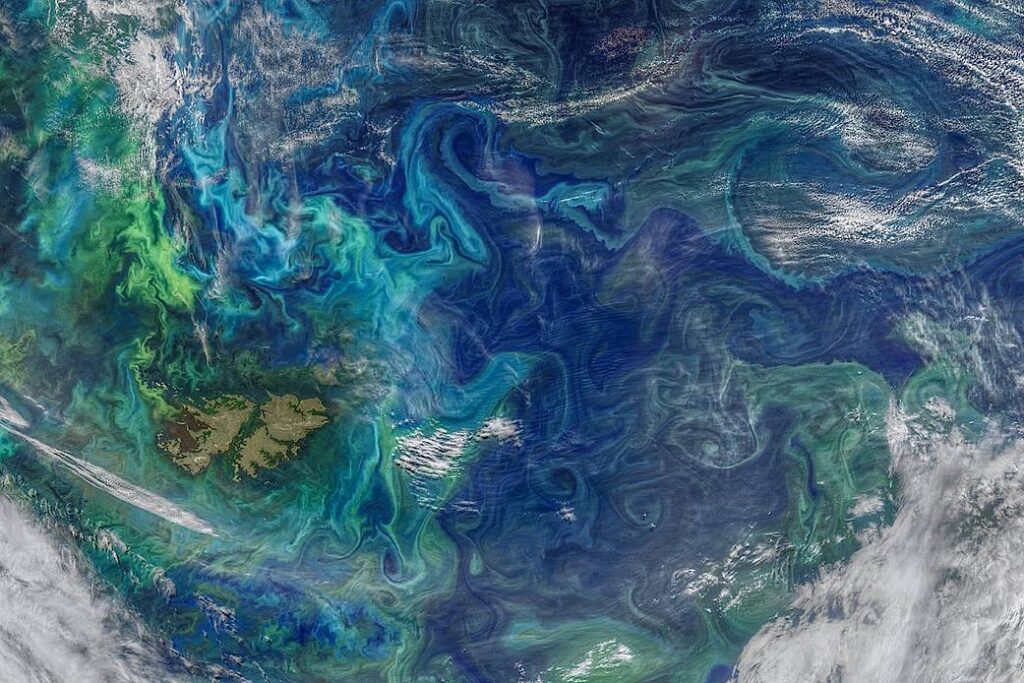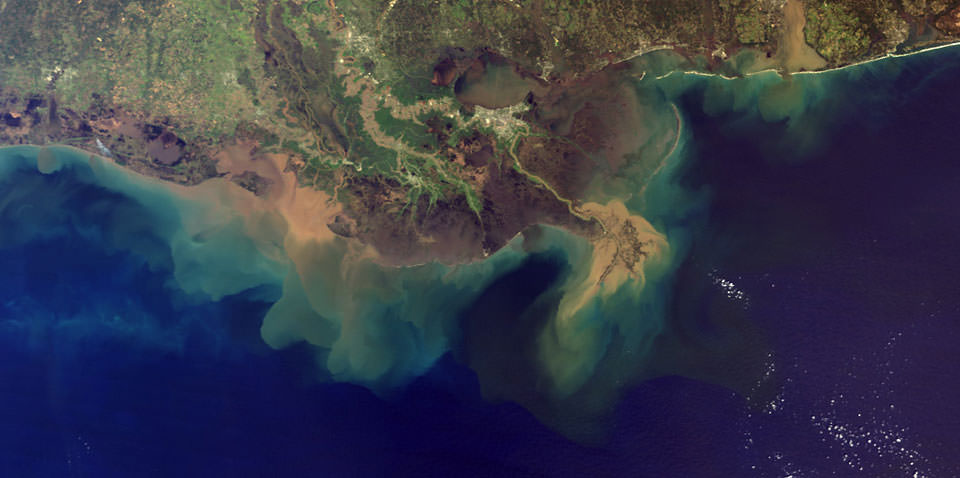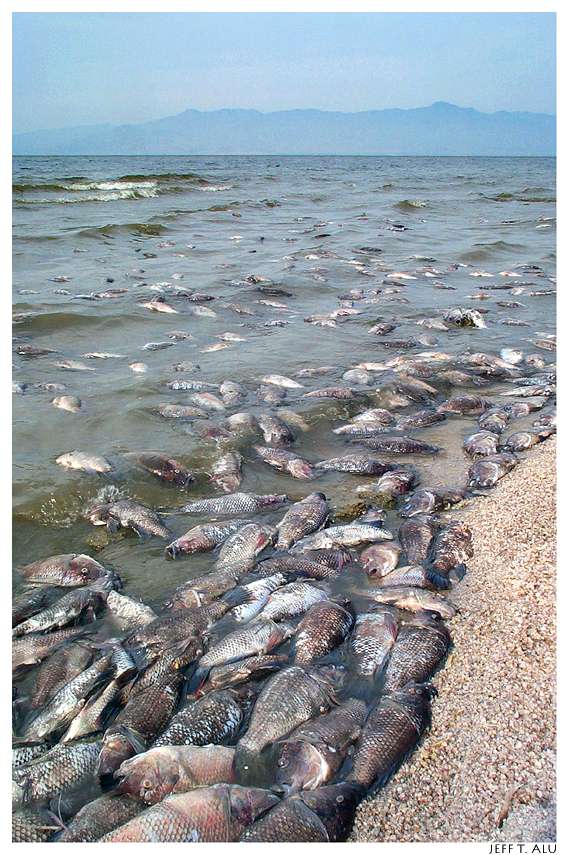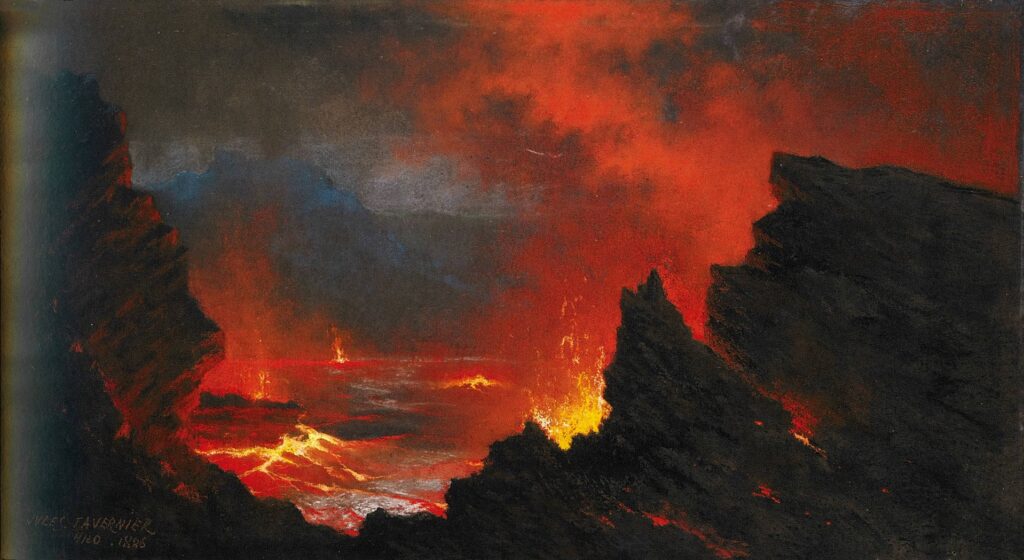How Mother Earth can be destroyed — an energy perspective on why mass extinction occurs.

Of all the woes mankind has created, the mass extinction of innocent lives is perhaps the biggest abomination of all. The reason for writing this piece is that not many people are aware we are in the midst of an ongoing mass extinction¹ and even less have a clue on how we have contributed to it. So I felt the responsibility to write and construct a simple picture for anyone to grasp easily.
Some background information, most paleontologists agree that there are about 5 to 10 historical extinction events that could be classified as “mass extinction”, meaning roughly 70% or more species become extinct within a geological epoch. The number of events is not exact because it depends on the classification criteria, and you can imagine the further past an extinction event was, the less evidence was left for modern humans to study and quantify its severity. Anyway, let’s move on from background info and delve into the “mechanics” of mass extinction.
I will start out with the answer directly — mass extinction occurs when there is a rapid increase/decrease of energy flux into the biosphere², that’s why mass extinctions were always associated with a sharp change in global temperature. The latter case (a rapid decrease of energy input) is fairly simple to understand e.g., if we were to suddenly shut down the Sun’s energy input or cool the Earth into an icy hell, of course, many biochemical processes would stop and all life that can’t stand frigid darkness would be killed off³.
However, in many cases, mass extinctions were first triggered by the former — a sudden sharp increase in energy input into the biosphere (remember, an abundance of energy doesn’t always build things, it can destroy just like nuclear explosions). The way you have to think about it is that a stable (healthy) biosphere is one that is good at moving and mixing energy around to avoid sharp energy gradients from popping up frequently, and an abrupt change in energy input destroys this capability. This may be quite abstract, but more concrete examples will show you how this works.

The Great Oxidation Event
The oldest mass extinction inferred is the one induced by ancestral cyanobacteria, termed the Great Oxidation Event, although some don’t count it in a “typical” mass extinction list which is limited to the Phanerozoic Eon where fossilization occurred more readily. Anyway, this mass extinction is self-evident because we know life on Earth had evolved under anoxic conditions for a very long time, and we know today’s anaerobes are very afraid of oxygen i.e., there is some fundamental incompatibility between anaerobic biochemistry and oxygen that is unhackable.
Obviously, the poisonous oxygen alone can explain why this mass extinction happened, but there is a more fundamental, general explanation. Cyanobacteria, due to the newly evolved high-efficiency photosynthesis (particularly in the novel filamentous, multi-cellular form of cyanobacteria), greatly increased the energy inputs into the biosphere. Oxygen (a high-energy molecule), is just one manifestation of it. You can imagine the sudden extra energy spike also produced dozens of other novel high-energy molecules in large quantities (some food, some poison), which benefit some but are unfamiliar to the majority, pushing natural selection in a narrow direction that further intensifies energy gradients. In other words, the interconnectedness of the primordial food-energy web was inevitably disrupted, and the capability to move around energy was hampered, i.e., those who cannot access enough energy would be killed off.
Secondarily, the next phase of extinction was driven by the massive change in atmospheric chemistry (plunging CO₂ by excessive photosynthesis) that induced a “Snowball Earth”, putting the biosphere energy balance in an opposite direction and instigating a dramatic “wax and wane” that lasted millions of years.

The Late Ordovician Extinction
The Late Ordovician extinction (or Ordovician-Silurian extinction) is often referred to as the first mass extinction involving more complex life (≈ 86% of species wiped out). The world was generally in great turnover at that time along with prolonged temperature fluctuation. There was great bio-diversification happening (the first land plant occurred around that time!), but with high background extinction at the same time. Nonetheless, there was one massive extinction episode that stood out.
The debate on the cause, especially the primary trigger, has not been settled. Most agree that global cooling, massive glaciation plus sea-level drop first (as much as 80 meters!), and ocean anoxia and euxinia (strong sulfidic condition) second were the main “kill mechanisms”, but what first triggered this cold, dreadful episode is less certain.
In general, a combination of processes was at play: from 1) Tectonic activities altering ocean circulation (hence energy mixing), land surface albedo and reducing magmatic CO₂ degassing, 2) enhanced silicate weathering that drew down atmospheric CO₂ substantially, to 3) the colonization by the first land plants which harvested extra Sun’s energy and drove a large increase of rock mineral weathering leading to extensive dead zones (think of an algal bloom but at a much larger scale). Overall, the common theme is that the energy input into the biosphere and the climate system was disrupted significantly.
The second pulse of extinction continued as the glaciation receded and warm conditions returned abruptly i.e., the energy influx to the biosphere was sharply increased again, the wax and wane continued.

The Late Devonian extinction
Same as the Late Ordovician extinction, the Late Devonian extinction appears to have no single primary trigger and was likely driven by a series of big players. They range from 1) the expansion of large vascular land plants that led to abrupt global cooling (similar to what ancestral cyanobacteria did), plus ocean anoxia and euxinia by enhanced nutrient weathering, 2) Massive volcanic activities in the Viluy Traps, to 3) meteoric impacts and the explosion of a nearby supernova (which explains the depletion of ozone)!
Again, our friendly green plants were the potential main culprit, which means the destructive events were rooted in a sudden increase in photosynthetic energy input into the biosphere. Massive volcanic activity and cosmic/bolide impact also first-hand supplemented sharp pulses of energy into the biosphere.
Secondarily, anything involving “lots of dust” would further perturb the energy balance by pushing the climate into a long, dark volcanic winter, plus a subsequent abrupt global warming and ocean anoxia when this dark winter receded due to the short atmospheric lifetime of most aerosols.

Permian-Triassic extinction
Possibly the biggest mass extinction up till now with around 95% of species vanished. Extreme volcanism in the Siberian Traps on the North of the lost Pangea is agreed to be the primary trigger⁴. As Pangea was beginning to rift apart around that time, it created faults and vents that allow some of the largest ever built-up of magma and its eruptions in terms of both intensity and duration (≈350,000 years). This hellish episode unleashed an estimated 2 million km³ of engulfing molten rocks from the deep Earth and much more hot toxic gases such as sulfur dioxide, chlorinated and fluorinated molecules (+ numerous greenhouse gases), etc. Sulfur dioxide readily forms sun-blocking aerosols and acid rain (i.e., volcanic winter). Chlorine and fluorine-containing gases destroyed the UV-shielding ozone layer in addition. All these are manifestations of an abrupt transfer of energy from the asthenosphere to the biosphere.
After this dark sulfidic nightmare, a secondary episode of volcanism occurred as a result of the lateral expansion of sills that eventually erupted on the rim of the original igneous trap. This form of lateral encroachment of magma burned a lot of fossil fuel and carbonate rocks underground and emitted up to 100,000 Gt of CO₂, shooting Earth’s temperature abruptly up by more than 10°C and producing enormous ocean anoxia! You can imagine why this is so far the biggest extinction ever.
Triassic-Jurassic extinction
This extinction has a similar primary trigger as the Permian-Triassic extinction above, due to the violent eruption of the Central Atlantic Magmatic Province which pumped out 2–4 million km³ of molten rock and lasted for about 600,000 years. This period also saw the continual rifting of Pangea, which may have caused a release of up to 100,000 Gt of CO₂, increasing Earth’s temperature by around 7.4°C, which then created an extensive acidifying and anoxic ocean.

Cretaceous-Paleogene (K-PG) extinction
This is perhaps the most “sudden” mass extinction and the easiest one to understand, the 8 miles wide asteroid carried an insane amount of kinetic energy and released it mainly as heat into the biosphere in a rapid collision. Secondarily, the blast was followed by an impact winter, which further created the typical wax and wane of the Earth’s energy balance for millennia to come. A near concomitant eruption of the massive Deccan Trap also added to the severity of this biotic crisis.

Anthropogenic mass extinction (or “Anthropo-centric” mass extinction…)
At this point, you expected this already — it is no coincidence that we are driving an ongoing mass extinction by suddenly pumping loads of fossil energy into the biosphere, only to sustain our modern fast-pace and wasteful lifestyle. Gazillion joules of corpse energy is released as direct heat, as well as loaded onto thousands of toxic chemicals plus some major greenhouse gases and exported to the rest of Mother Earth.
Unsettlingly, roughly 70% of all individuals of vertebrate species have disappeared over the last 50 years. Surveys in Germany also found that 75% of all flying insects in Germany’s national parks have vanished in the last 25 years (n.b. we can’t evaluate % species loss with fossil records like other mass extinctions, as there is no fossil remains for things happening “now”, plus it doesn’t take complete extinction for a species to be absent in fossils due to low fossilization rate and incomplete survey). In fact, the current warming rate is faster than all historical mass extinctions by crude comparison⁵. In terms of CO₂ production, it would only take another ≈ 5000 years for modern humans to overtake the upper estimate of the amount of CO₂ (170,000 Gt) released during the eruption of Siberian Traps which lasted at least 100 times longer. Not a single doubt, Mother Earth is right now an energetic chaos.
“Our analysis emphasizes that our global society has started to destroy species of other organisms at an accelerating rate, initiating a mass extinction episode unparalleled for 65 million years. If the currently elevated extinction pace is allowed to continue, humans will soon (in as little as three human lifetimes) be deprived of many biodiversity benefits.” — Ceballos et. al. (2015)
The take-home
You can now see in most cases, mass extinctions were caused by some really big players — geologic and cosmic flukes, as well as the fat and rich primary producers sitting on the boundary of the inorganic and organic world. Humans, particularly the wealthy ones, are now “remarkably” earning a seat at that round table, we are the very first heterotrophic species to trigger a mass extinction from within the web of life, so we are indeed pretty badass…
Joke aside, what you can see is that the kill mechanism, whether it is an impact winter, toxic ocean dead zones, or abrupt global warming, are all just manifestations of perturbed energy input into the biosphere, i.e., you can be 100% guaranteed that something bad will happen so long as we don’t manage this energy balance well.
Second, you can tell off climate change skeptics who cite the Earth was even warmer many millions of years ago. Their fact is right, but the interpretation is not — it is the rate of change of energy input or temperature that matters, the more abrupt the change following an energetically stable period, the worse the consequence. Living systems “tune” to their closest history of “energy landscape”, adaptations favorable millions of years ago but are now obsolete are shed like memory loss because of thermodynamics. So yes, Mother Nature won’t be thriving in the new abrupt warm condition we created (not in the next tens of thousands of years before it “re-tunes”) especially when we are just beginning to come out of an ice age that lasted about 100,000 years.
“But we will have nuclear fusion soon! That will solve all the energy problems!”
Unlimited, net-zero, green energy, whatever you try to name, does not help so much if this energy is not contained within a close loop i.e., not letting it leak at a high rate to the biosphere. Think of the mountains of waste and pollutants we generate (ultimately from energy), how much chance do we really have to contain them? Guess what, even in an impossibly perfect scenario, there is still a maximum thermodynamic efficiency for any conceivable process, because heat can always emit as radiation at the very least, so energy leakage is embedded in the unhackable laws of physics.
That is, to bluntly put it, these alternative energy sources won’t save us even if they replace fossil energy completely. Instead, we should focus on a true circular economy with high system-wide efficiency that minimizes wastage and leakage (remember, waste “treatment” still needs extra energy!) and most importantly, we need to limit total energy consumption, both of which require us to restrain our pace of consumption and life activities in order to earn a slim chance. Therefore, we need to get off from pledging to reduce CO₂ emission and instead pledge to reduce the consumption of energy directly, pledging the former without the latter is basically green-washing.
To end, it is not hard to envisage that when the day of “100% green” energy sources replacing all the old dirty energy comes (if it ever happens in the near term before catastrophic extinction), politicians, media giants, and techno-lunatics would be quick to praise it like a gift from God, that we have redeemed ourselves to be “free” (to become more reckless), etc., only for the mass to continue to scratch their head on seeing that the surrounding environment keeps worsening day by day. If we are not realistic, there is a high probability that the scene would either be: 1) a portion of humans racing to colonize another planet for good, or 2) the elites creating a system of slave labor to build a planetary-scale air conditioner that spews out excess heat into space. No matter which one you prefer, the same old story would repeat: the rich will pump and dump while living in a protected zone, social justice warriors will keep on yelling, only for the lowly subspecies to be left further and further behind in the sea of externality.
“Nothing will change if we rank illusion over reality.”
If you like this story, please share it out and bookmark my page! Support me here.
Footnotes
- Although mass extinction is usually expressed in terms of species going extinct, I would add that the impact on surviving species can still be massive. In the conversation about extinction, I would also argue that the “rich and powerful” and the “poor and weak” are “distinct species”. The divide and reproductive isolation have simply grown so large that it fits the definition of speciation, which is just a matter of time.
- “Local” extinctions happen all the time because of the energy cut-off of a small part of an ecosystem e.g., when a breakpoint occurs in a specific food chain, any organisms that depend strongly on that chain will go extinct.
- It is a common mistake to think that life derives all its energy from either light or chemical bonds. In fact, we need heat, aka kinetic energy to drive all biochemical reactions of life. When optimal supplies of heat are cut off, many, especially complex and specialized lifeforms can simply not hang on. That’s the reason tropical forests are the most biodiverse and populated ecosystems on Earth.
- The Capitanian extinction that happened about 10 million years before the Permian-Triassic mass extinction was often considered slightly short of being classified as a mass extinction. It has a similar origin i.e., the eruption of the Emeishan Traps in the now Sichuan Province of China.
- It may not be fair to compare temperature records of a couple of centuries to mass extinction episodes lasting at least tens of thousands of years, because of the non-linear greenhouse effect and highly-aggregated data in the latter.

